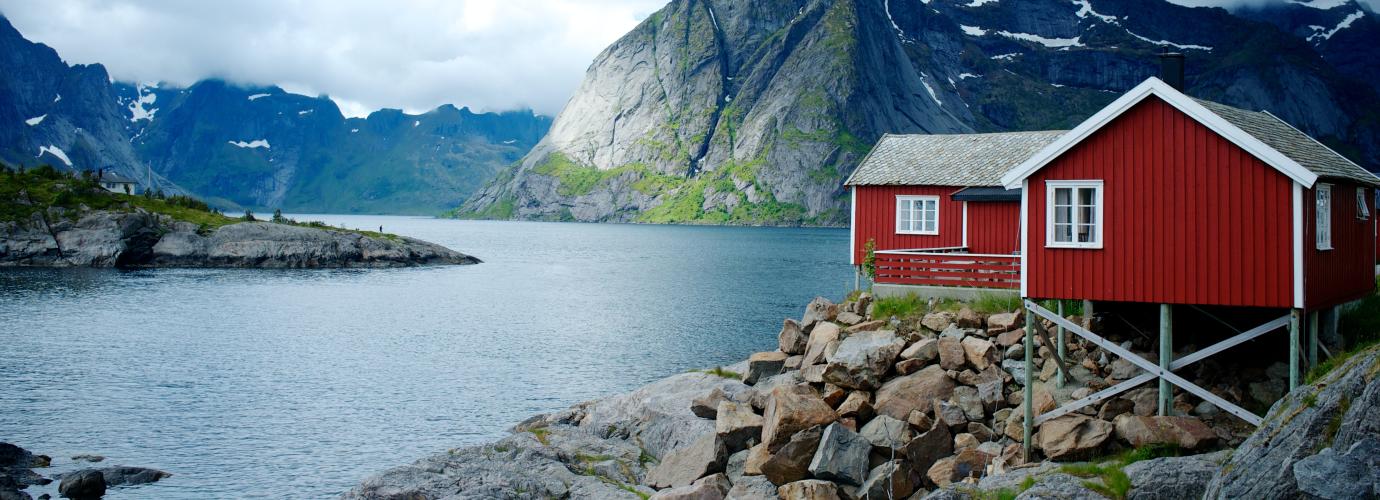Demographic situation
Norway had 5,585 million inhabitants by 2024. The region including the capital Oslo has around 1,5 million inhabitants. With a mainland area of 300 000 square kilometres, Norway has a low population density. However, almost 83 % of the population now lives in urban areas.
Immigrants, defined as both parents being born outside Norway, constituted 16,8 % of the total population in 2024. 4 % of the total population have parents born abroad. In 2024 approximately 52 % of the immigrants came from countries in Europe.
Official and minority languages
Norway has, for about one hundred years, had two official written forms of the Norwegian language, bokmål and nynorsk. The origin of bokmål is a written Norwegian version of the Danish language, resulting from significant influences by Danish civil servants and their culture for several hundred years. The origin of nynorsk is the dialects spoken in rural areas of Norway. Pupils and their parents have, in principle, the right to choose which of the official Norwegian languages the pupils should be taught in school. However, the municipality decides which official language should be used in its schools. It is therefore, in practice, often difficult to receive one's education in the desired language if this is the wish of only a small minority in the municipality. All pupils learn both languages as a part of the subject Norwegian, final examinations in Norwegian include written work in both languages. In addition to the two official written languages, there are a variety of spoken dialects.
The Sami people have their own languages. There are an estimated 20 000 Sami speakers in Norway. This population is centred mainly in the northernmost county of Finnmark and Oslo. The municipalities are responsible for ensuring that kindergartens for Sami children in Sami districts are based on the Sami language and culture. In other municipalities, steps shall be taken to enable Sami children to secure and develop their language and their culture (Kindergarten Act). As a general rule, Sami pupils are entitled to compulsory and upper secondary education in their own language (https://lovdata.no/dokument/NL/lov/2024-03-08-9/KAPITTEL_10#KAPITTEL_10). The Sami language is considered an important bearer of Sami culture, and it is therefore important to maintain both written and oral forms of the language. Another strong argument is the importance of the level of competence in the mother tongue for the successful acquisition of knowledge, attitudes and skills.
Other language minorities include small groups who have lived in Norway for a long time, as well as groups of recent immigrants. Emphasis is placed on the necessity to teach the children both their mother tongue and the Norwegian language. Children from minority groups must be given the same opportunities as other pupils. In the capital Oslo, pupils in primary school represent more than 200 countries.
Sign language has official status as a minority language, developed for deaf and hearing impaired pupils.
Religions
Up till July 2012 Norway has had a state church, the Evangelical Lutheran Church. Since July 2012 the Church of Norway is an independent legal entity with its own governing bodies and independent responsibility for all matters relating to the Church’s faith and activities. Bishops would be appointed by the Church’s own bodies on the basis of broad-based arrangements for nominations and elections. The Church of Norway would continue to have a special relationship with the State pursuant to a Church Act adopted by the Storting.
There is full religious freedom. In addition to the Evangelical Lutheran Church, there are a variety of smaller Christian denominations, most of which are organised in both national and international church associations. In the towns, many of the world's religions are represented with congregations, often arising from and depending on the number of inhabitants that are immigrants.
The principle of freedom of choice in religion and the existence of the Lutheran Church are two factors that have had major influence on legislation and curricula in the educational system.

